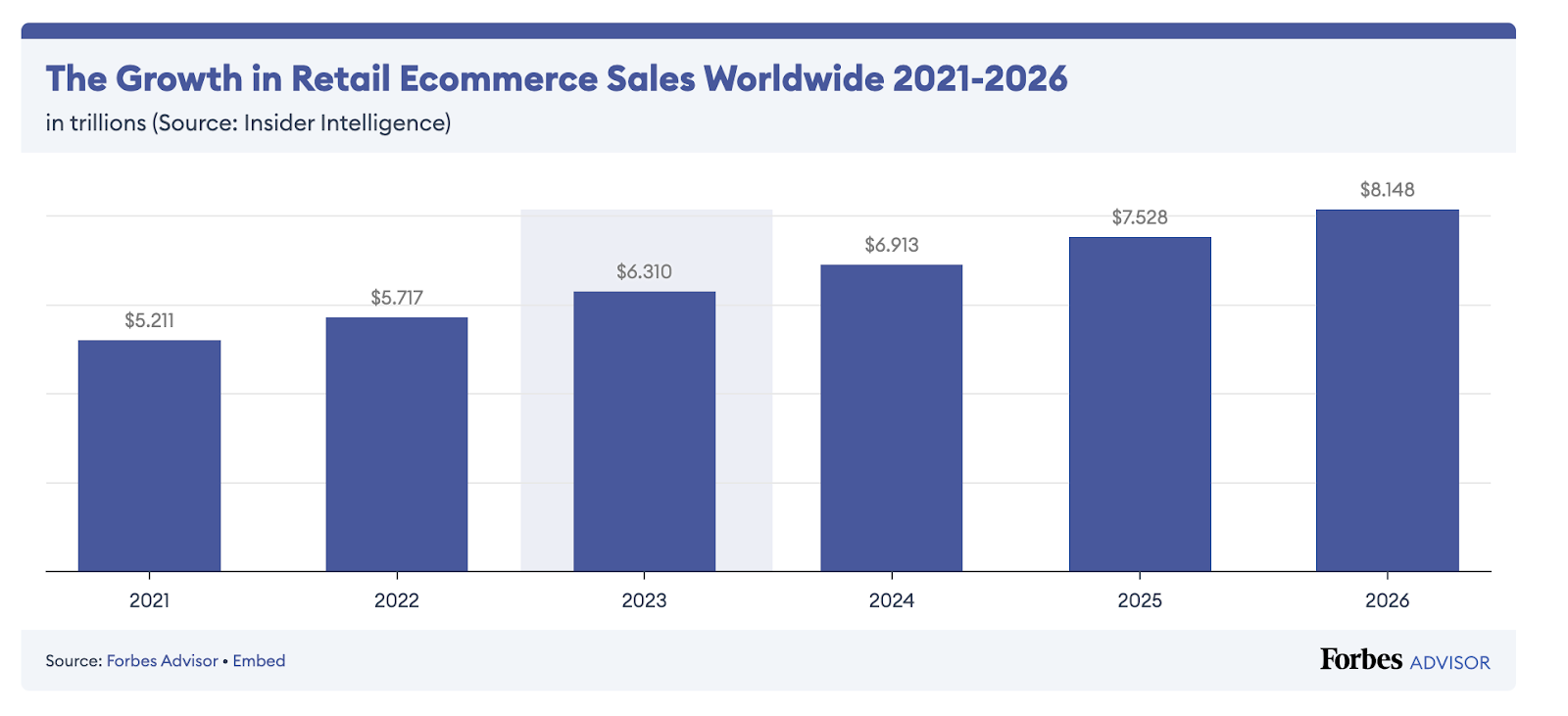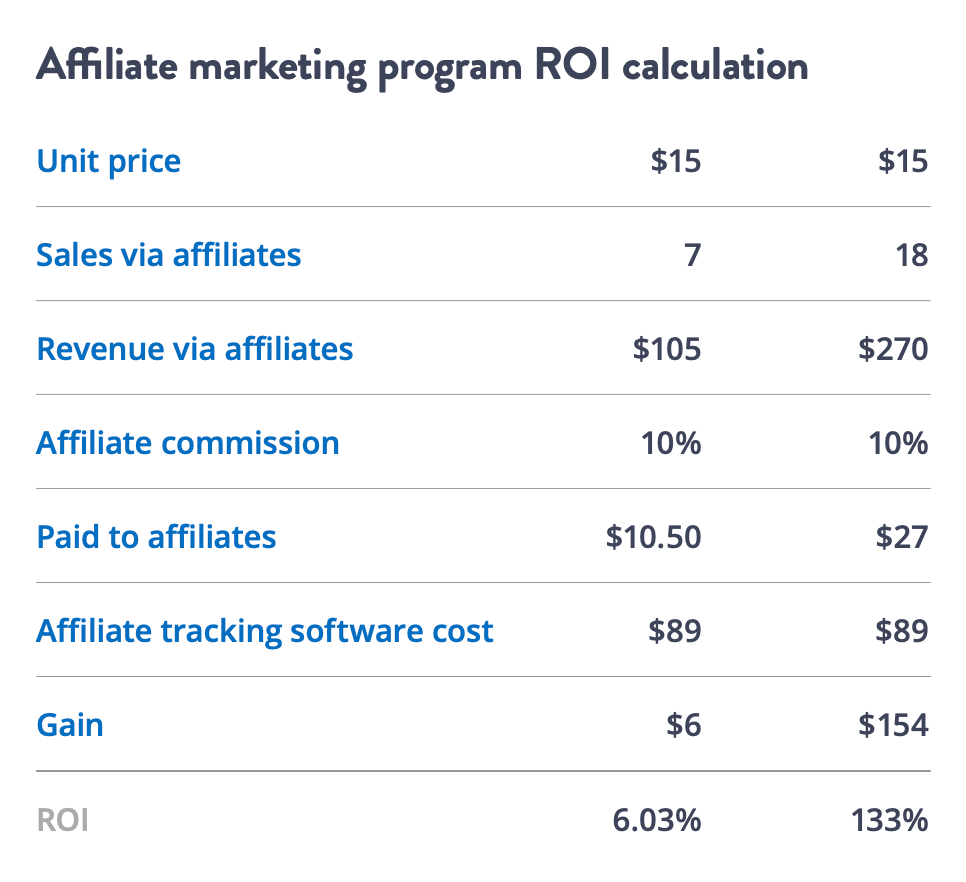If you are thinking about setting up a Shopify affiliate program for your brand, you’ve come to the right place. As online shopping continues to grow, having an affiliate program can give your brand a competitive edge in the e-commerce space. In 2023, 20.8% of retail purchases are expected to happen online. By 2026, that is expected to increase to 24%.
In this article, we’ll guide you through the process of setting up an affiliate program on Shopify, covering the essential steps, tools, and strategies to make your program successful.

What is Shopify?
Shopify is an all-in-one ecommerce platform for businesses to start selling online. You can set up your online store, manage sales, inventory and any customer interactions in one place.
Whether you’re selling knitted sweaters from your living room or running a boutique coffee bean business, Shopify offers a friendly and straightforward way to get your products in front of people from all around the globe.
Additionally, Shopify provides tools and resources to help your business grow. You can explore various features like marketing tools and analytics on their app store.
How Does Affiliate Marketing Work?
Businesses partner with individuals, websites, influencers or other companies, referred to as affiliates, who promote their products. Whenever a sale is made through an affiliate’s promotion, they earn a commission from the business. It’s a beneficial arrangement for both the business and the affiliate: the business gets more sales, and the affiliate earns from each sale they help make. It’s tracked using affiliate tracking software so that commissions are attributed to the correct affiliate.
How does Affiliate Marketing Work on Shopify?
Essentially, affiliate marketing on Shopify works the same as affiliate marketing anywhere else. The main difference is that brands need to install affiliate tracking software plugins available on the Shopify app store to enable them to track their affiliate sales, or install tracking code manually onto their Shopify site for those solutions that are not currently listed on the Shopify app store.
9 Benefits of Setting up Your Shopify Affiliate Program
If you have an online store on Shopify, setting up an affiliate program can be a smart move to grow your brand. Shopify is a popular platform for online stores, and it has features that make starting an affiliate program straightforward. With Shopify, you can easily manage your affiliate program, keep track of sales made through affiliates, and handle commission payouts.
Setting up an affiliate program on Shopify can offer a range of benefits to help grow your brand and boost your sales. Here’s a breakdown of some notable advantages:
1. Increased Traffic and Sales:
Affiliate marketing can drive more visitors to your online store. More traffic usually translates to higher chances of sales. With affiliates promoting your products to different audiences, you’ll likely see a notable uptick in both traffic and sales figures.
2. It’s Cost-effective:
Starting an affiliate program is relatively low-cost, especially when compared to other marketing strategies. You only pay for actual sales, making it a budget-friendly option. This performance-based payment structure ensures you get value for every dollar spent.
3. Extended Reach:
Affiliates can help your brand reach new audiences you might not have accessed otherwise. They can promote your products in various online spaces and to different demographics, extending your brand’s reach significantly.
4. Increased Visibility:
Launching an affiliate program on Shopify can help you work with different people who will promote your products to their audiences. This can significantly increase your brand’s visibility online, reach more potential customers, and boost your sales.
5. Reduced Risk:
The low upfront cost and pay-for-performance model minimizes the financial risk associated with affiliate marketing. You’re essentially leveraging the audiences and platforms of your affiliates, which requires less financial investment compared to other marketing channels.
6. Building Relationships:
Affiliate programs foster mutually beneficial relationships between you and your affiliates. These partnerships can lead to other collaborative opportunities, broadening your network within your industry.
7. Scalability:
As your business grows, the affiliate program can easily be scaled up to match your new goals. The flexibility inherent in affiliate marketing allows for easy adjustments to the program as your business evolves.
8. Data and Insights:
Through an affiliate program, you can gain valuable insights into market trends, customer behaviors, and the effectiveness of your marketing strategies. The data collected can be used to make informed decisions to further optimize your marketing efforts.
9. Brand Loyalty:
Satisfied affiliates can become loyal brand advocates, further enhancing your brand’s reputation and trustworthiness in the market.
Initiating an affiliate program on Shopify is a strategic step towards leveraging external audiences for brand growth, and the benefits can be substantial when executed correctly.
How Much Does it Cost to Set up a Shopify Affiliate Program?
Embarking on the journey of setting up an affiliate program for your Shopify store requires a clear understanding of the associated costs and the potential return on investment (ROI). Here, we provide a brief outline of the costs involved and use an ROI example from Tapfiliate, to explain the financial dynamics of running an affiliate program.
Setup Costs:
Platform Fees: If you opt for a third-party affiliate tracking platform like Tapfiliate, you will incur a monthly or annual fee. If you opt for Shopify Collabs there are no monthly fees, but transaction fees of 2.9% on the transaction value.
Affiliate Commissions: Although not a setup cost per se, it’s imperative to budget for the commissions you’ll pay out to affiliates. The commission rates can vary widely based on your industry, product pricing, and the structure of your affiliate program.
Additional Costs to Consider:
Training & Support: Providing training and support for your affiliates is crucial for the success of your program. This might include creating training materials or even organizing training sessions.
Communication Tools: Tools to facilitate regular communication with your affiliates will also incur costs. Whether it’s email marketing software or webinar platforms, these tools are necessary for maintaining engagement with your affiliates.
ROI Calculation:
Tapfiliate provides an insightful ROI example to help you grasp the financial implications of an affiliate program. Assume you have 20 affiliates, each generating 10 sales per month with an average sale value of $100. If your commission rate is 10%, you’d pay $10 per sale, totaling $2,000 in commission payments monthly. If your monthly fees for the affiliate tracking platform and other operational costs sum up to $500, your total monthly cost is $2,500. However, with total sales amounting to $20,000, the ROI of your affiliate program is substantial.
ROI Formula: (Total Sales – Total Costs) / Total Costs x 100 = ROI percentage
Plugging in the numbers: ($20,000 – $2,500) / $2,500 x 100 = 700%
This rough example paints a compelling picture of the revenue potential against the costs of running an affiliate program. While the initial setup and ongoing operational costs are a necessary investment, the ROI, as illustrated by the Tapfiliate example, can be quite rewarding. Ensuring a well-structured, well-managed affiliate program can indeed serve as a lucrative revenue stream for your Shopify store. Here is a very simplified version with a lower unit price.

Steps to Set Up Your Shopify Affiliate Program
Setting up an affiliate program on your Shopify store can unlock a new realm of revenue potential. This step-by-step guide will navigate you through the process, ensuring a smooth setup from deciding commission rates to recruiting affiliates, and integrating tracking systems such as Tapfiliate. Here are the steps to kickstart your Shopify affiliate program:
Define Your Affiliate Program Structure:
Determine the commission structure, payout terms, and any other guidelines or rules for your program. Will you offer a flat rate per sale, a percentage of the sale, or perhaps tiered commissions based on performance?
Select an Affiliate Tracking Platform:
Choose a tracking platform like Tapfiliate that will help you manage, track, and analyze your affiliate program. The right platform will automate many aspects of managing your affiliate program and provide necessary analytics.
Essential Strategies for Successful Shopify Affiliate Marketing
navigating the landscape of affiliate marketing demands a strategic approach to reap lucrative rewards. Here, we delve into some indispensable strategies for creating a successful Shopify affiliate program and fostering profitable partnerships.
Cohesive Branding:
Ensure your branding is consistent across all channels. Cohesive branding not only strengthens brand recognition but also builds trust with both affiliates and customers.
Quality Product Offerings:
At the core of a successful affiliate program is a quality product. Ensure your products are of high quality, as this will not only attract reputable affiliates but also satisfy customers leading to higher conversion rates.
Affiliate Training and Support:
Providing training and ongoing support empowers your affiliates with the necessary knowledge and tools to effectively promote your products.
Effective Communication:
Maintain open lines of communication with your affiliates. Regular updates on new products, promotions, and any changes in the program are vital for keeping affiliates engaged and informed.
Make Data-Driven Decisions:
Make informed decisions based on data. Analyzing the performance data of your affiliate program will enable you to identify what’s working, what’s not, and where improvements can be made.
Customized Marketing Materials:
Provide affiliates with a variety of marketing materials that they can use to promote your products. Having a mix of banners, product images, and other promotional assets caters to different marketing platforms and strategies.
Continuous Optimization:
Continuously optimize your affiliate program by analyzing performance data, gathering feedback from affiliates, and staying updated on affiliate marketing trends.
Implementing these strategies can significantly contribute to creating a thriving affiliate program on your Shopify store. By nurturing mutually beneficial relationships with your affiliates and continually refining your strategies based on data-driven insights, you can propel your Shopify affiliate marketing program towards sustained success and profitability.
Create Your Shopify Affiliate Program Today
Starting your Shopify affiliate marketing journey isn’t just about tapping into an e-commerce strategy; it’s about opening doors to expansive growth, brand recognition, and a thriving online business. Shopify’s seamless integration with various affiliate platforms makes it an enticing proposition for store owners looking to broaden their sales without exponentially increasing their marketing spend.
A well-managed Shopify affiliate program paves the way for fostering meaningful partnerships with individuals and entities eager to promote your products. It’s about creating a win-win scenario where affiliates are rewarded for their marketing endeavors, and you reap the benefits of increased sales and wider brand exposure.
The perks of having an affiliate program stretch beyond immediate revenue gains. It’s about building a community around your brand, gaining insightful feedback from affiliate partners, and continually refining your marketing strategies to resonate with a broader audience. Furthermore, the data-driven insights derived from affiliate marketing campaigns are invaluable for understanding market dynamics and customer preferences.
In the rapidly evolving e-commerce landscape, staying ahead of the curve is pivotal. Integrating an affiliate program within your Shopify store is a forward-thinking move that not only augments your marketing arsenal but sets a solid foundation for sustainable growth.



